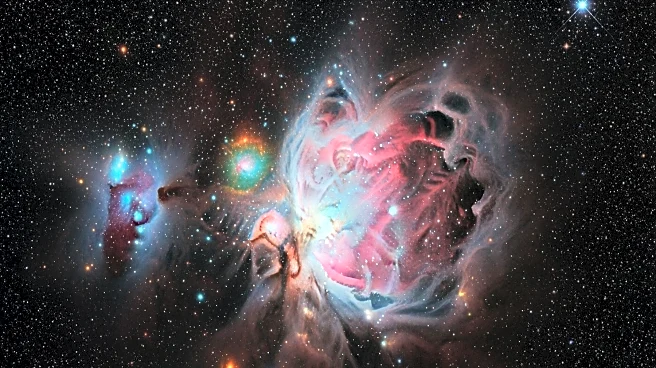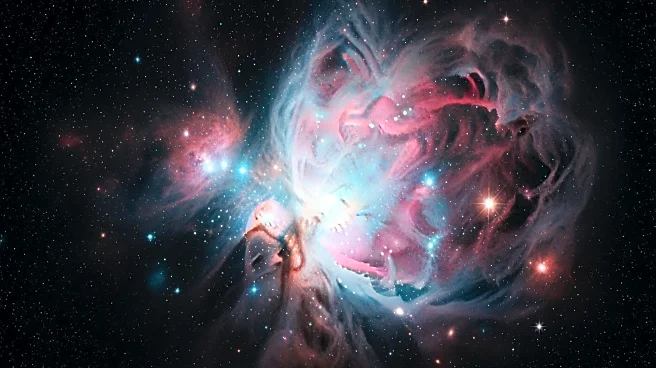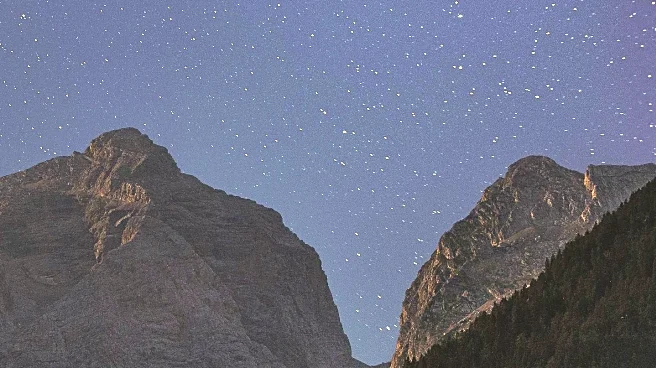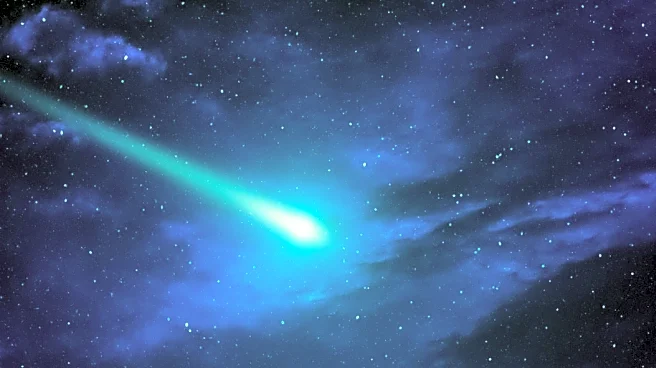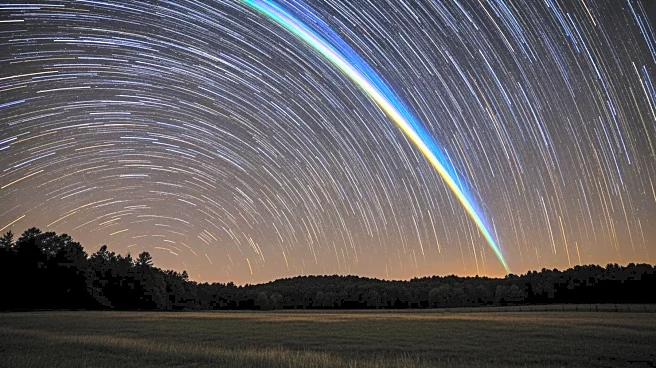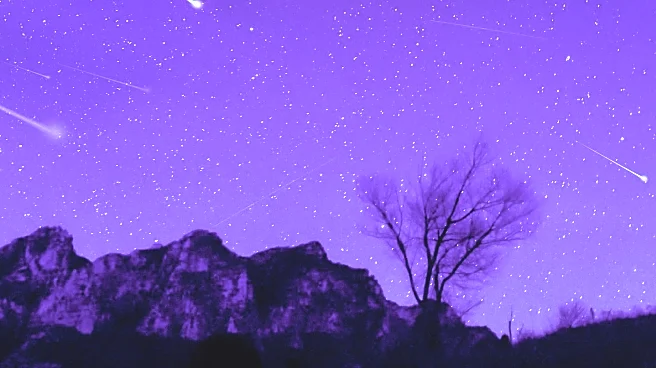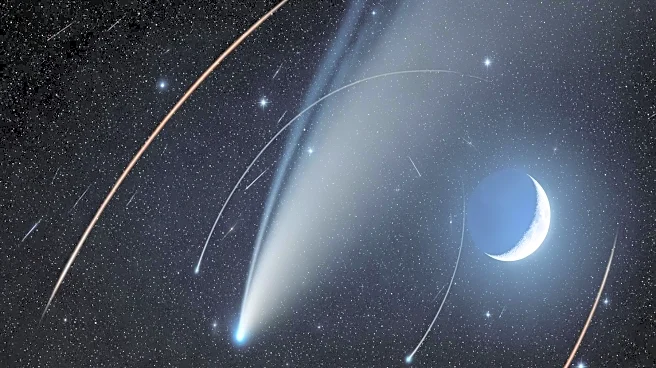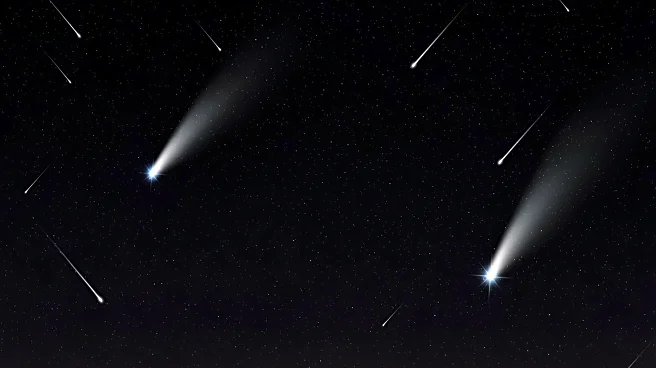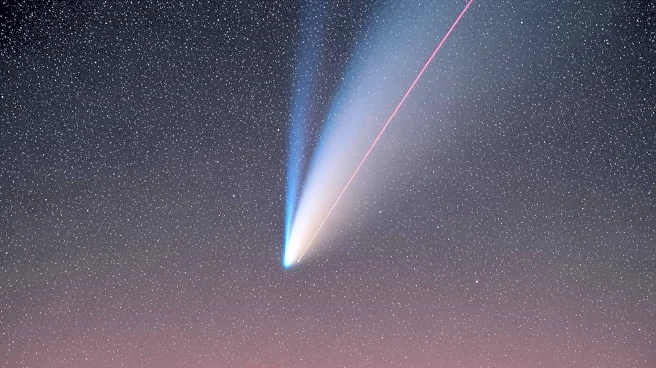What's Happening?
The California Nebula, also known as NGC 1499, is currently a prime target for stargazers, according to a recent article. Located in the southern part of the Perseus constellation, the nebula is illuminated
by the nearby star Xi Persei. The nebula is notable for its shape, which resembles the state of California, and is composed of glowing gas excited by the star. The article notes that the nebula reaches an altitude of 45° by 11 P.M. local daylight time and peaks around 3 A.M., making it an excellent subject for observation during this period. Despite its magnitude of 6, the nebula's low surface brightness requires dark skies for effective visual observation. The use of a Hydrogen-alpha filter is recommended to enhance its visibility against the night sky. The article also mentions other celestial events occurring around the same time, such as the peak of the Orionids meteor shower and Comet Lemmon's closest approach to Earth.
Why It's Important?
The visibility of the California Nebula presents a significant opportunity for both amateur and professional astronomers to observe and photograph a unique celestial phenomenon. The nebula's appearance in the night sky coincides with other notable astronomical events, providing a rich period for sky observation. This period of visibility can enhance public interest in astronomy and encourage educational activities related to space observation. For astrophotographers, the California Nebula offers a challenging yet rewarding subject due to its size and low brightness, potentially leading to stunning images that can be shared with the broader community. The event underscores the importance of dark sky preservation, as light pollution can significantly hinder the ability to observe such phenomena.
What's Next?
Stargazers and astronomers are likely to continue monitoring the California Nebula and other celestial events throughout the month. The ongoing visibility of the nebula may lead to increased public engagement with astronomy clubs and observatories hosting viewing events. Additionally, the data collected during this period could contribute to ongoing research in astrophysics and the study of nebulae. As the Orionids meteor shower and Comet Lemmon's approach continue, these events may also draw attention to the importance of preserving dark skies and reducing light pollution to facilitate better astronomical observations.
Beyond the Headlines
The visibility of the California Nebula highlights broader issues related to light pollution and its impact on astronomical observations. As urban areas expand, the encroachment of artificial light into natural environments poses challenges for astronomers and stargazers. This event serves as a reminder of the need for policies and initiatives aimed at reducing light pollution, which can enhance the quality of life and preserve the natural night sky for future generations. Additionally, the event may inspire interest in the scientific study of nebulae, contributing to a deeper understanding of the universe and the processes that govern it.
